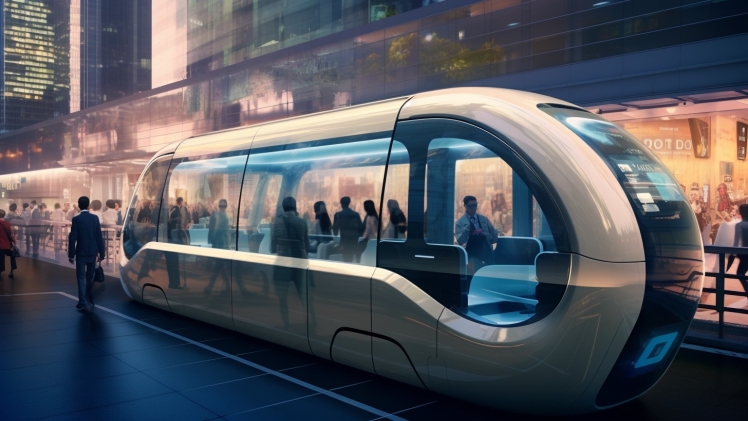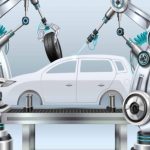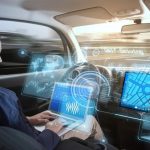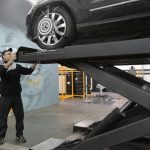The automotive industry, once synonymous with traditional combustion engines and mechanical engineering, is undergoing a profound transformation. In recent years, advancements in technology, environmental concerns, and shifting consumer preferences have given rise to a new era in automotive innovation. This article explores the current state of the automotive industry, the driving forces behind its evolution, and the exciting future that lies ahead.
The Current Landscape:
The automotive industry is in the midst of a seismic shift, with electrification and connectivity emerging as key trends. Electric vehicles (EVs) are gaining traction as the industry pivots towards sustainable alternatives to traditional internal combustion engines. Major automakers are investing heavily in EV technology, with electric cars becoming more accessible to consumers and charging infrastructure expanding globally.
Connectivity is another game-changer in the automotive landscape. Modern vehicles are equipped with advanced sensors, cameras, and communication systems that enable features such as autonomous driving, real-time navigation, and smart vehicle-to-everything (V2X) communication. These technologies not only enhance safety but also redefine the overall driving experience.
Electrification and Sustainability:
The push towards electrification is driven by a growing awareness of environmental issues and a desire to reduce the carbon footprint of transportation. Electric vehicles offer a cleaner and more sustainable alternative to traditional gasoline-powered cars. Governments around the world are incentivizing the adoption of EVs through subsidies, tax breaks, and stringent emission regulations.
Major automakers are committing to ambitious electrification goals. Companies like Tesla, known for pioneering electric cars, have inspired a wave of innovation across the industry. Established players such as BMW, Ford, and Volkswagen are investing heavily in electric vehicle development, unveiling new models with increased range, faster charging times, and cutting-edge technology.
Connectivity and Autonomous Driving:
Connectivity has transformed the way we interact with our vehicles. Advanced infotainment systems, smartphone integration, and voice-activated controls have become standard features in modern cars. Additionally, vehicle-to-vehicle (V2V) and vehicle-to-infrastructure (V2I) communication are paving the way for safer and more efficient transportation systems.
Autonomous driving technology is a frontier that continues to be explored. While fully autonomous vehicles are not yet commonplace, features like adaptive cruise control, lane-keeping assistance, and automated parking have become increasingly prevalent. Companies like Waymo and Tesla are at the forefront of developing and testing fully autonomous vehicles, with the potential to revolutionize the concept of personal transportation.
Industry Collaboration and Innovation:
The automotive industry’s evolution is not solely the result of individual company efforts but also reflects a broader trend of collaboration and partnerships. Traditional automakers are joining forces with tech companies, startups, and other industry players to leverage each other’s strengths and drive innovation.
Electric vehicle manufacturers are partnering with battery technology companies to enhance energy storage capabilities, addressing concerns about range and charging infrastructure. Tech giants like Apple and Google are exploring partnerships with automakers to integrate their software into vehicles, creating a seamless and connected user experience.
Challenges and Opportunities:
While the automotive industry is embracing innovation, it also faces challenges. The transition to electric vehicles requires significant investment in infrastructure, including charging stations and grid capacity. The development of reliable and secure autonomous driving technology demands rigorous testing and regulatory approval to ensure safety.
However, these challenges present opportunities for growth and innovation. As the industry addresses infrastructure needs, it opens new avenues for job creation and economic development. Advancements in battery technology and renewable energy sources contribute to the sustainability of electric vehicles, further aligning the automotive sector with global environmental goals.
The Future of Mobility:
Looking ahead, the future of automotive transportation is poised to be dynamic and multifaceted. Electric vehicles will become more mainstream, with improved battery technology leading to increased range and faster charging. Connectivity will continue to advance, creating smarter and safer vehicles.
The concept of mobility-as-a-service (MaaS) is gaining traction, challenging the traditional model of car ownership. Ride-sharing, car-sharing, and subscription-based services offer flexible alternatives to owning a vehicle. Autonomous vehicles, once fully realized, could reshape urban transportation, reducing traffic congestion and enhancing road safety.
Conclusion:
The automotive industry is at the forefront of a technological revolution that is reshaping the way we move and interact with the world. From electric vehicles to connected cars and autonomous driving, innovation is driving the industry towards a more sustainable, efficient, and interconnected future. As consumers demand greener alternatives and seamless digital experiences, the automotive landscape will continue to evolve, providing exciting opportunities for growth, collaboration, and a cleaner, more connected tomorrow.





